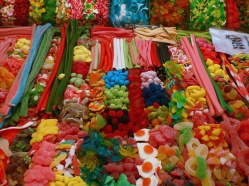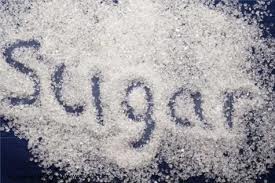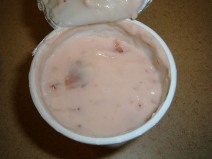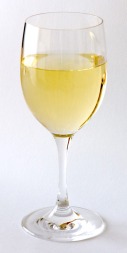
There’s been a big change in nutritional advice over the past few years; while before, fatty foods were seen as the worst thing for your diet, evil options which instantly add inches to your waist and clog your arteries, nowadays it’s sugar which is viewed as the enemy. Things with a higher fat content like eggs are suddenly ‘superfoods’, and nutritionists are advising increased consumption of such foods, advising people to restrict their sugar intake instead. (This isn’t to say that your entire diet should be made up from fats- it isn’t an excuse to eat unlimited amounts of cheese, unfortunately).
I’d read a lot of negative things about sugar, without really taking much notice. That is, until I read Nicole Mowbray’s ‘Sweet Nothing‘ which made me re-think things and make the effort to decrease my sugar intake. The reason? I simply didn’t realise how much sugar I was consuming; I am a healthy eater, and am not one to snack on sweets, cakes or to drink full-sugar drinks, and therefore didn’t for a second think I ate much sugar at all. As it turns out, I was eating sugar that I didn’t even realise existed in the foods I was eating, and my diet was in fact a lot-less varied than I thought.
The foods I’d eat daily would be things like: cereal, bread, fruit, low-fat yoghurts, crackers and cereal bars, dried fruit, noodles or rice with shop-bought sauces. All healthy options- or so I thought. After all, my diet wasn’t full of takeaways, fatty foods or sweets, and I’d choose a low-fat option over the ‘unhealthy’ alternative. But in reality, I was actually eating a relatively unbalanced diet which was high in sugar.
Here are some of the worst foods for being deceptively high in sugar (and which my old diet consisted mainly of):
Even the healthier-looking cereals contain a fair amount of sugar: Dorset Cereals Honey Granola has over 11 grams of sugar in one portion- more sugar than you’d find in a Krispy Kreme glazed doughnut. Even Bran Flakes which are regarded as the plainest, healthiest of cereals have 12 grams of sugar in one portion- almost twice that of a Krispy Kreme. It turns out that cereal doesn’t have to be chocolate-flavoured or brightly coloured to be full of sugar.
- Refined Carbohydrates- The ‘White’ Stuff
White bread, pasta, rice, etc. These refined carbohydrates turn into sugar very quickly in the body, causing your blood sugar level to rise sharply and then drop, leaving you feeling hungry after only a short amount of time. If you eat a lot of white carbs you might not think you’re eating a lot of sugar, but the effect on the body is similar. Plus, quite often sugar is added to things, especially to baked foods like breads/ bagels; this could lead to you eating sugar you’re unaware of.
Another one of my mistakes- always choosing the ‘low-fat’ or ‘low-calorie’ choice. In reality, these aren’t the healthy option, as they are packed with added sugar. Fat-free yoghurts have up to 14 grams of sugar in one serving, more than you’d find in a chocolate mousse and the same amount as in a portion of Haribo jelly sweets.
- Fruit Juices/ Smoothies
Orange juice contains around 9 grams of sugar per 100 ml, while Coke has 10 grams per 100 ml. Would you drink coke with your breakfast? Obviously not. Orange juice, on the other hand, is largely marketed as healthy, despite their almost identical sugar content. If you have a glass of around 300 ml orange juice, you’re drinking almost 30 grams of sugar and a third of your recommended daily intake.
Smoothies are no better; they’re largely marketed as being super-healthy, a way to get your daily portion of fruit along with numerous vitamins and minerals. In reality, they contain more sugar than anything else. Take Innocent smoothies, branded for being completely natural and, well, innocent.Well, they contain up to 12 grams of sugar in only 100 ml- more sugar than coke. It might be natural sugars, but it is still an exceedingly high amount.
- Low-Fat Products
Another thing I’m guilty of; thinking I’m being healthy by choosing low-fat desserts or ready-meals. But while they may be low in fat, there is a ton of added sugar in such foods: one Weight Watched Chilli and Wedges ready-meal has nearly 13 grams of sugar, while their desserts have over 23 grams of sugar- the same amount as a bar of Galaxy chocolate. It could be better to have a full-fat treat once in a while, than frequent ‘healthy’ treats, it seems!
It’s easy for forget that you’re consuming calories and consequently, sugar, when you’re drinking alcohol, when in fact alcohol is brimming-full of sugar. Beer can contain up to 20 grams of sugar in one pint and a glass of wine can have around 10 grams of sugar. Not to mention cocktails, which are loaded with sugary fruit juice…
- Packaged Soup and Sauces
Another way you could be eating far more sugar than you realise. Even in savoury sauces and soups, there is a fair amount of added sugar. When looking at many different brands of sweet chilli sauce, one thing is the same: ‘sugar’ is the first thing written on the ingredient list. There is over 6 grams of sugar in one serving, and over 40 grams in 100 grams. In pasta sauces, you can see around 10 grams of sugar in one serving, even in the ‘healthy living’ version.
And then there’s soup- not something you’d think of as sugary. Well, in one can of tomato soup, there are, in fact 20 grams of sugar, and even in the ‘diet’ version there are nearly 10 grams.
- Cereal Bars
I used to eat tons of cereal bars, thinking they were so healthy, when in fact, some bars have around 20 grams of sugar in them, double that of something like a Kit-Kat. Pretty shocking for something marketed as the ‘healthy’ alternative to a chocolate bar. Plus, if you look at the ingredients list, sugar (and alternatives to sugar: syrup, glucose etc) is always present high-up the list.

There are a few easy swaps you can make to your diet to dramatically decrease your sugar intake. Here are some foods which have become a staple in my diet:
- Oats and oatcakes
- Rye bread
- Eggs (mainly for breakfasts to replace sugary cereals)
- Grains- quinoa, oats, buckwheat, rye, brown rice
- Protein- chicken, fish, eggs, tofu
- Avocado
- Vegetables in the place of fruit.
I have spoken before about easy, healthy food swaps here. It only takes a few smalls changes to make a big difference: swap white for brown, swap fruit for vegetables, swap processed for natural. If you’re like me, you’ll actually find that your diet becomes a lot more varied and interesting; my meals consist of much more flavour-full food now that I’ve replaced the refined carbohydrates with other, more tasty things.
I have found the benefits to be worth the effort; I used to get sharp hunger pangs a couple of hours after breakfast, even feeling shaky if I hadn’t eaten for a little while. This has now changed, and I feel fuller for longer, which is great! And you are safe in the knowledge that you’re filling your body with good stuff; I thought I was already pretty healthy, but it turned out I wasn’t. Now, I honestly feel better for the changes that I’ve made.
So, if you want to feel healthier, trying making a few small changes and cutting the levels of the sinful white stuff in your diet… even if you’re not chomping down on tons of sweets every day, your diet still might be a lot sweeter than you thought…

Filed under: Food, Health, Living





Recent comments